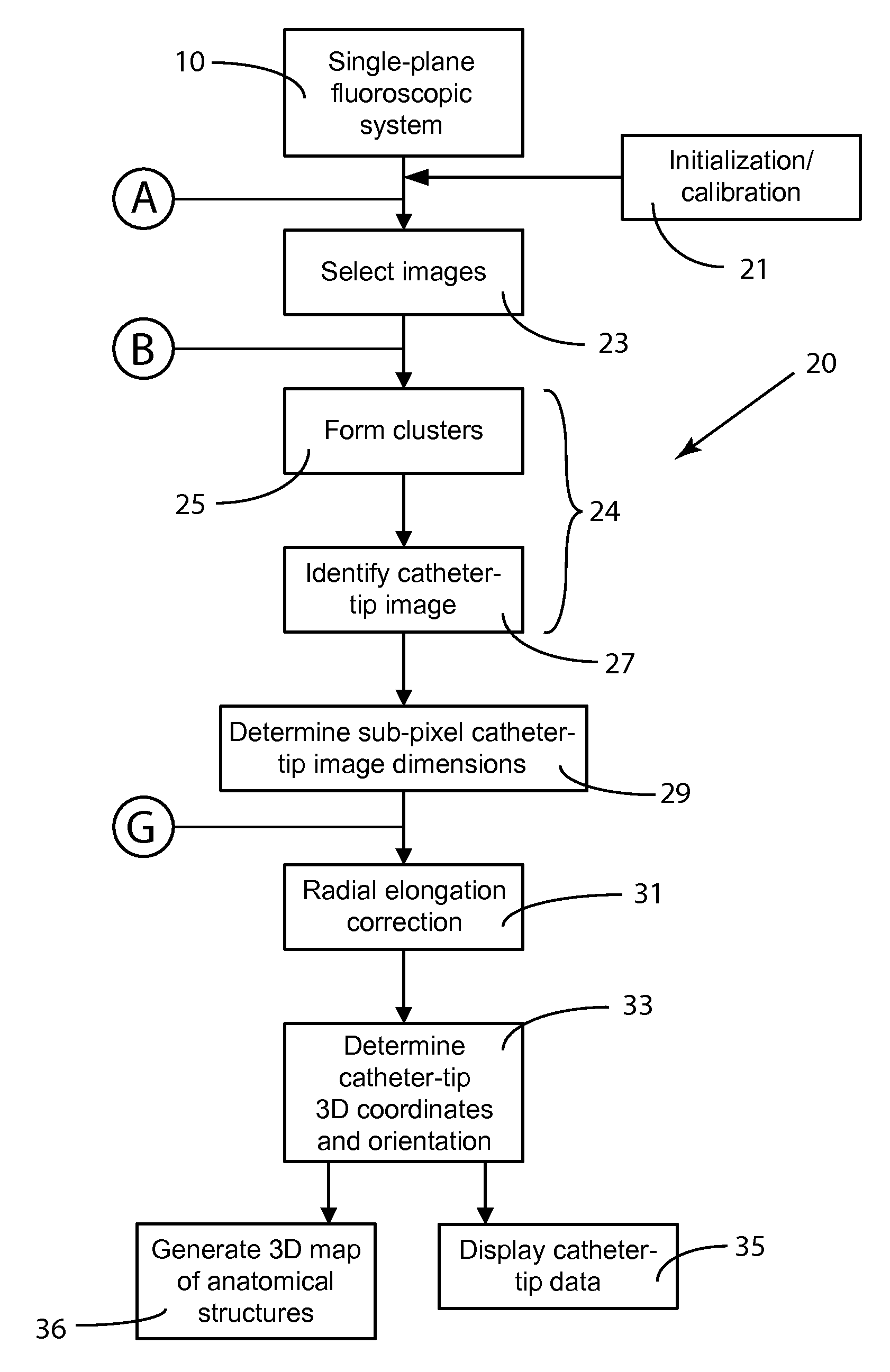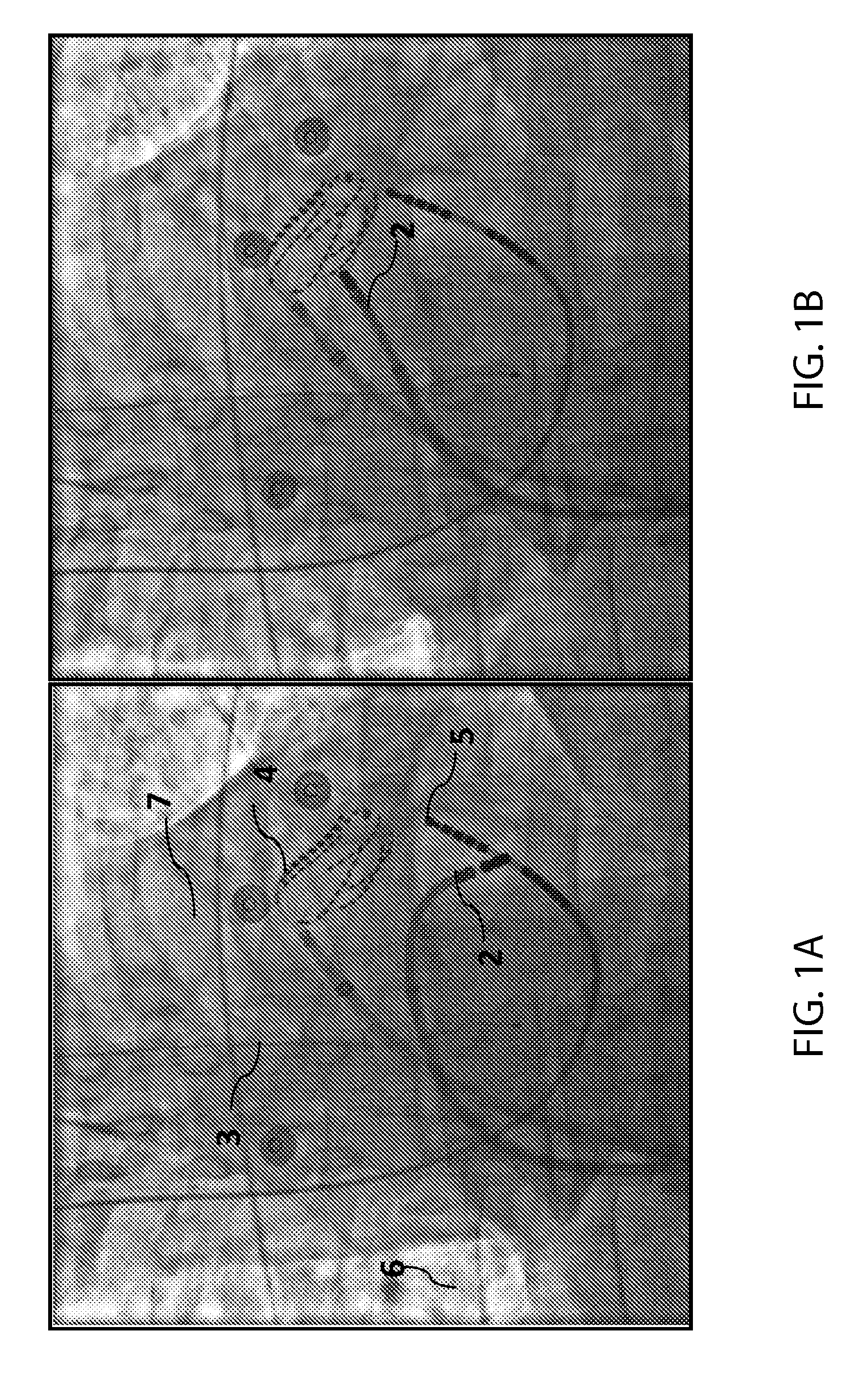Automatically Determining 3D Catheter Location and Orientation Using 2D Fluoroscopy Only
a fluoroscopy and location technology, applied in the field of medical imaging systems, can solve the problems of limited usefulness, inconvenient operation, and high cost of conventional fluoroscopy systems, and achieve the effect of z-coordinate accuracy
- Summary
- Abstract
- Description
- Claims
- Application Information
AI Technical Summary
Benefits of technology
Problems solved by technology
Method used
Image
Examples
embodiment 20
[0090]FIG. 4 is a general schematic of the inventive method for determining the 3D location of an object such as catheter using a single-plane fluoroscopic system. For convenience, the inventive system henceforth is called the Catheter Tip 3D Location System and will be referred to herein as C3DLS to shorten the terminology. The term “system” to describe the method since the method is carried out primarily by software which constitutes a system in the wider use of the term. The terms “process” and “functional element” as well as the specific terms referred to in the various elements in the schematic figures are used interchangeably herein in describing the operations or method steps of the inventive method or system.
[0091]C3DLS 20 includes the use of a conventional single-plane fluoroscopic system 10 which generates a series of sequential 2D fluoroscopic images which are available as a stream of digital images. The rate at which such images are generated may be a typical rate such a...
second embodiment
[0159]FIG. 15A illustrates a composite R-wave detector, composite R-wave detection system 50c2. Composite R-wave detection system 50c2 includes similar inputs as composite R-wave detection system 50c1 and the same channel R-wave detection systems to generate channel trigger signal t1(t)-tn(t). Channel R-wave trigger signals t1(t)-tn(t) are inputs to a trigger-window filter 100. Trigger-window filter 100 outputs a composite R-wave trigger in a trigger output tc(t) (101). Trigger-window filter 100 is configured to output a trigger in trigger output tc(t) when it receives a channel R-wave trigger from any one of the channel R-wave detectors. When such a trigger occurs in tc(t), all channel trigger signals from the channel R-wave detectors not triggering composite R-wave detector 50c2 are ignored for a predetermined time period (lockout period tLO) after composite R-wave detector trigger output tc(t) is triggered.
[0160]FIG. 15B illustrates one such triggering. Channel R-wave trigger sig...
PUM
 Login to View More
Login to View More Abstract
Description
Claims
Application Information
 Login to View More
Login to View More - R&D
- Intellectual Property
- Life Sciences
- Materials
- Tech Scout
- Unparalleled Data Quality
- Higher Quality Content
- 60% Fewer Hallucinations
Browse by: Latest US Patents, China's latest patents, Technical Efficacy Thesaurus, Application Domain, Technology Topic, Popular Technical Reports.
© 2025 PatSnap. All rights reserved.Legal|Privacy policy|Modern Slavery Act Transparency Statement|Sitemap|About US| Contact US: help@patsnap.com



